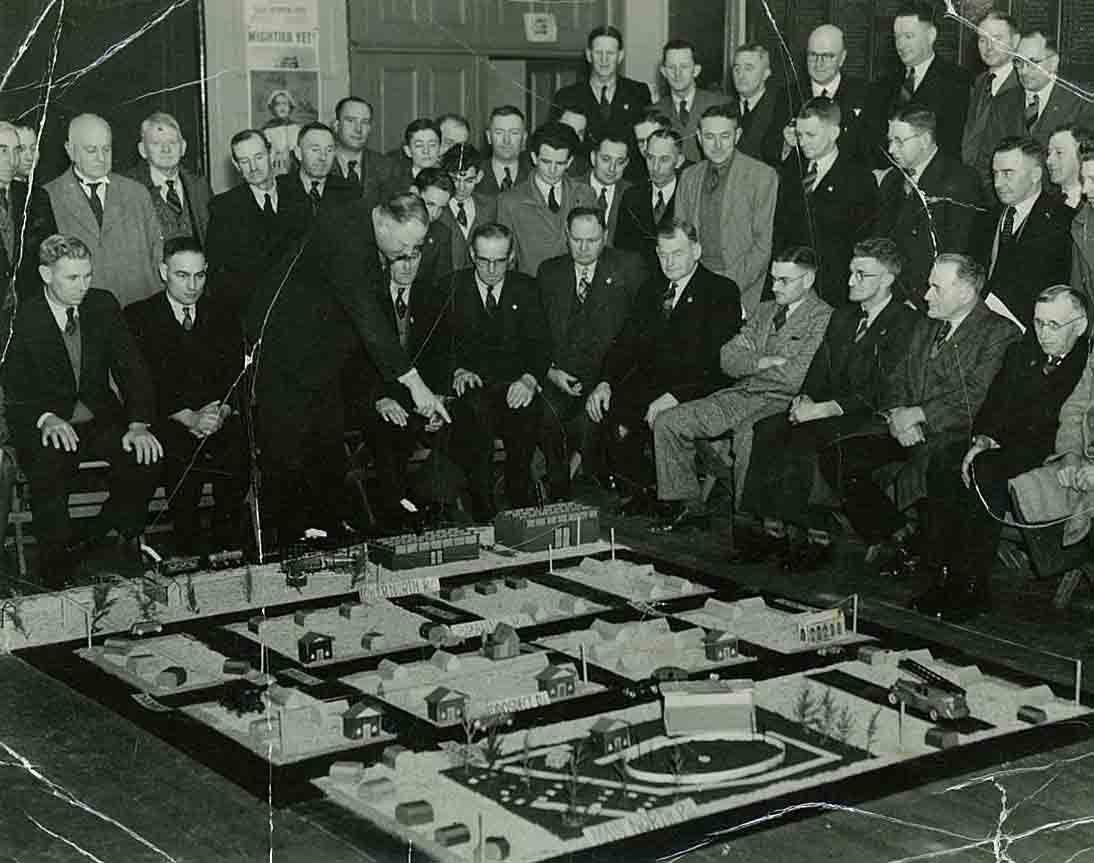
Meeting of Prospect Air Raid Wardens
ABOUT
The WW2 "air raid shelter" is located on Willcox Avenue, Prospect, close to the Prospect Oval. It is commonly referred to as the air raid shelter, however it was, in fact, a communication centre - Prospect Sub-Control Communication Centre. District centres were also constructed at Glenelg, Woodville, Port Adelaide, Unley, Thebarton, Norwood and Unley. The Central Air Raid Communication Centre was located in King William Street, Adelaide, with a sub control centre for the City of Adelaide nearby. The centres were part of the Civil Defence response to threatened air attacks by the Japanese air force.
District centres co-ordinated the local response to an air raid. Each centre was staffed by Air Raid Precaution personnel and at least 16 telephonists, supported by volunteers, including boys with bicycles, who acted as couriers.
Typical duties included receiving messages from various warden's posts, reporting damage to people and property in Prospect and adjoining areas, and maintaining contact with the Fire Brigade, public utilities and the Council Office.
Each district was sub-divided into lots of approximately 1000 residences. Each lot had an air raid warden who would patrol the streets checking black out curtains, giving advice on gas masks, shelter construction and what to do in case of an air raid. In Prospect, there were 189 male wardens and 120 female wardens. Wardens received compulsory training in first aid, resuscitation, anti-gas work and incendiary bomb control.
There were eight actual public air raid shelters in the Prospect district.
ABOUT
The WW2 "air raid shelter" is located on Willcox Avenue, Prospect, close to the Prospect Oval. It is commonly referred to as the air raid shelter, however it was, in fact, a communication centre - Prospect Sub-Control Communication Centre. District centres were also constructed at Glenelg, Woodville, Port Adelaide, Unley, Thebarton, Norwood and Unley. The Central Air Raid Communication Centre was located in King William Street, Adelaide, with a sub control centre for the City of Adelaide nearby. The centres were part of the Civil Defence response to threatened air attacks by the Japanese air force.
District centres co-ordinated the local response to an air raid. Each centre was staffed by Air Raid Precaution personnel and at least 16 telephonists, supported by volunteers, including boys with bicycles, who acted as couriers.
Typical duties included receiving messages from various warden's posts, reporting damage to people and property in Prospect and adjoining areas, and maintaining contact with the Fire Brigade, public utilities and the Council Office.
Each district was sub-divided into lots of approximately 1000 residences. Each lot had an air raid warden who would patrol the streets checking black out curtains, giving advice on gas masks, shelter construction and what to do in case of an air raid. In Prospect, there were 189 male wardens and 120 female wardens. Wardens received compulsory training in first aid, resuscitation, anti-gas work and incendiary bomb control.
There were eight actual public air raid shelters in the Prospect district.
